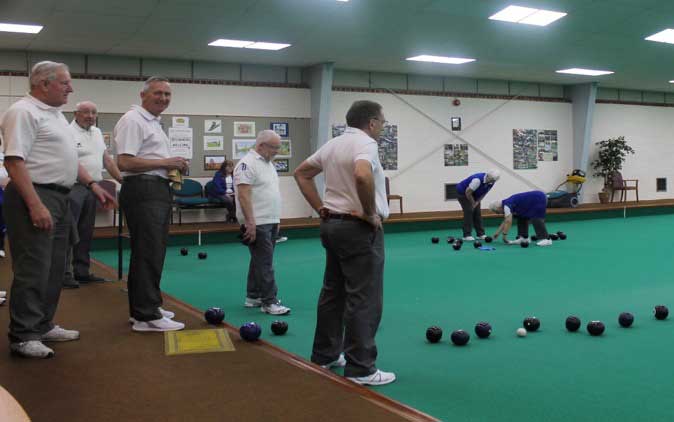The Basics – Bowling Roles & Duties
Bowling
Each player in a team has different duties to perform as well as bowling requirements.
The person to play first, called the lead, will toss the coin with the opposition lead to decide who can make the decision whether to “take the mat” or hand it to the opposition.
Whoever takes the mat will place it on the rink parallel to the direction of bowling on a position that is a minimum of 2 metres from the ditch.
The person who places the mat will then deliver the jack to a position that has to be a minimum of 23 metres from the front of the mat. The skip will centre the jack so that it starts in the centre of the rink.
The lead who placed the mat will then bowl their first bowl. Once this comes to rest the mat passes to the opposition lead who will then deliver their bowl.
The person standing on the mat and their skip have possession of the rink from the moment that the previous bowl came to rest until their own bowl comes to rest. Once the bowl has come to rest possession of the mat transfers to the opposing team.
If the bowler who has delivered a bowl wishes to speak with their skip or vice versa this must only be carried out when their team is in possession of the mat.
The skip will ask their bowlers to play bowls to certain positions and indicate to the player where their previous bowl lies in relationship to the jack.
Once the leads have finished delivering their bowls the number two’s and number three’s will then deliver their bowls in order, until all of the players at the mat end have delivered their bowls.
These bowlers will then walk along the centre of the rink to the opposite end of the rink where the bowls have been delivered. This is called “the head” and all players will stand still behind the head. At the same time the skips will walk to the mat and deliver their bowls with the number 2 in triples or the number 3 in fours (also called rinks) providing advice to their skip from the head when their skip is in possession of the mat.
Once all bowls have been delivered the person who gave the skip advice in conjunction with their opposite number will determine how many shots are to be awarded to the team whose bowl was closest to the jack. If the bowls are a similar distance from the jack then the person who challenges the number of shots requested by the opposition will measure the distance between the jack and the bowls. No bowls are to be disturbed until these people have agreed the number of shots and they will then communicate the score to their skips. No other players are to become involved in the measuring process and must stand away from the head and not comment. The only exception will occur when the player is physically unable to measure and then, by agreement, another member of their team can measure on their behalf.
In serious matches an umpire will be present and measure if the players cannot agree.
Once the score has been agreed the number two’s will adjust the electronic score board to record the change in the total score and the additional end played.
In all matches as soon as the score has been decided the lead who will deliver the jack is expected to place the mat as quickly as possible. The opposition lead is expected to use the bowls gatherer to collect the bowls and place them behind the mat. If the bowls gatherer is not used the bowls of the team will push the bowls back using their feet.
Scores are updated, by agreement within the team. This can be the number two in fours, skip in triples, lead in pairs or the marker in singles. It is important to decide before commencement of the game who is taking responsibility for scoring.
Team bowling requirements
The role of the lead is to deliver the jack to the length requested by the skip and then to deliver their bowl to rest as close as possible to the jack.
The number 2’s follows suit by delivering their bowls to finish as close to the jack as possible. This is called “building the head”. (Or as required by the skip).
The number 3’s will be asked by the skip to either continue to build the head, play defensive bowls to cover positions where if the jack is moved the opponents could score many shots or to play attacking shots to either remove opposition bowls or move the jack.
The skips will play similar shots to the number 3 carrying the ultimate responsibility for the result of each end as they play the last bowls.
